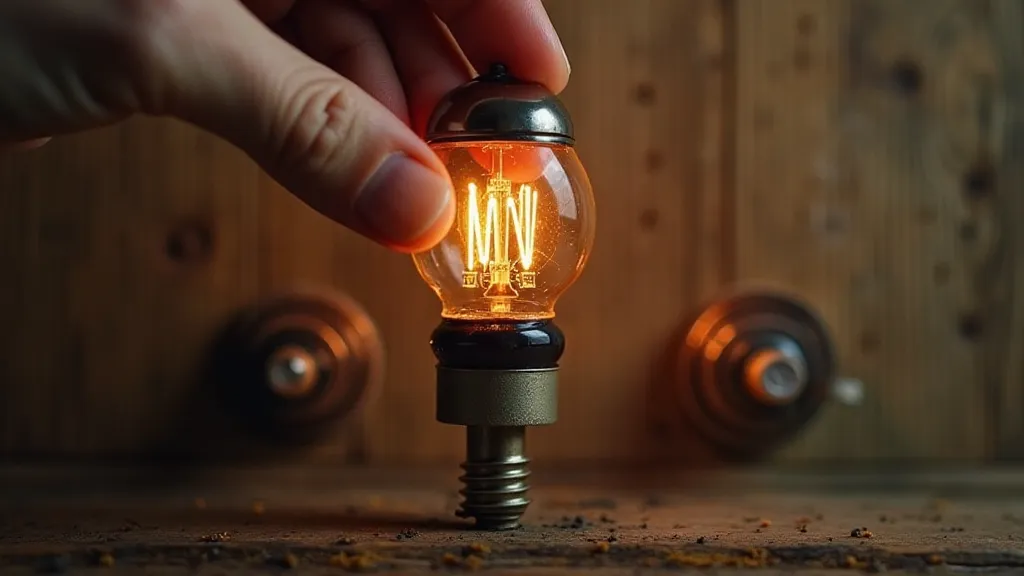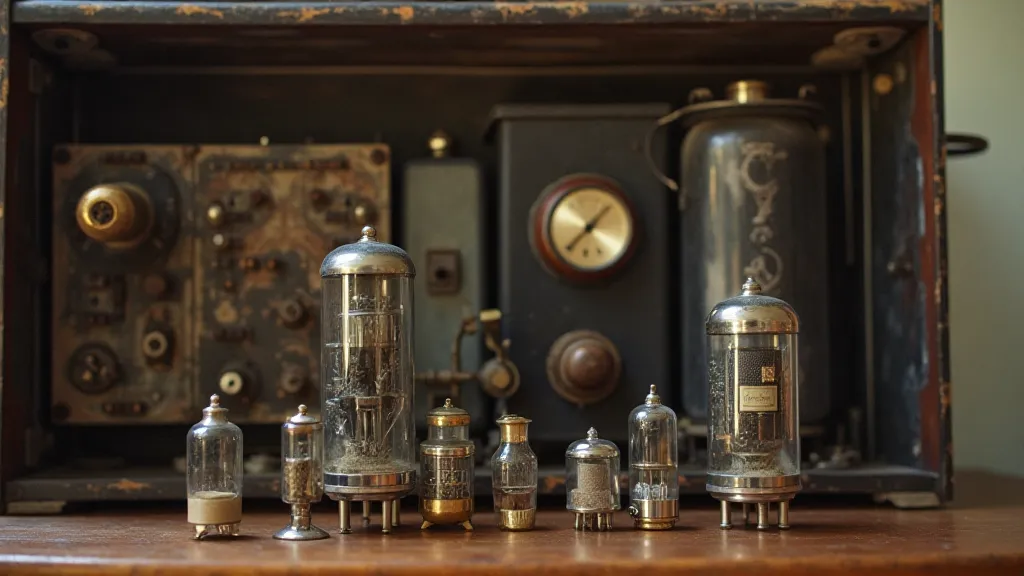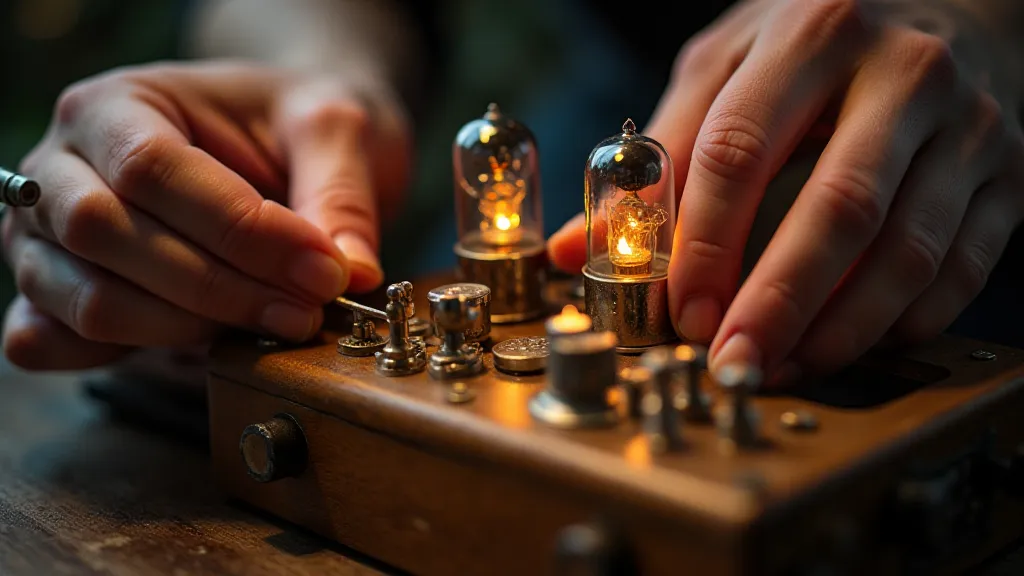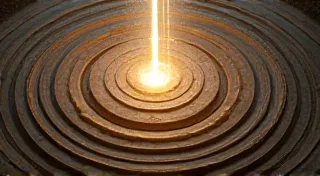The Cartographer's Compass: Navigating the Labyrinth of Vacuum Tube Replacement
The scent of warm dust, aged wood, and something indefinably electrical hangs in the workshop. It’s the aroma of resurrection, the fragrance of bringing history back to life. I’ll often find myself pausing, inhaling deeply, before even touching a radio. They're more than just machines; they're time capsules, each possessing a silent story of innovation, craftsmanship, and the evolution of entertainment. Restoring antique radios is a pursuit that binds us to the past, a delicate dance between preservation and reconstruction. And frequently, that dance revolves around the enigmatic world of vacuum tubes.
The heart of these radios, these beautiful, resonant boxes, beat with the glow of vacuum tubes. Without them, there’s only silence. Replacing them is often the critical point; the gateway to hearing that crackling announcer's voice again, that big band swinging, or that comforting news bulletin. Yet, it’s a task fraught with challenges, more complex than simply swapping a burnt-out bulb for a new one. It’s akin to a cartographer charting unknown territories – a painstaking process demanding precision, patience, and a deep understanding of the landscape.

The Ghosts in the Glass: Identification and History
The first hurdle is identification. Antique radio schematics, while valuable, aren't always gospel. A manufacturer might have substituted a different tube model for economic reasons, or a previous owner might have made an unauthorized alteration. Deciphering these anomalies demands a detective’s eye. There’s a certain thrill in the hunt – poring over grainy manuals, cross-referencing data sheets, and comparing markings on the tubes themselves. These markings aren't random; they’re coded messages, revealing the manufacturer, date of production, and sometimes even the specific factory where the tube was made. Each detail whispers a piece of the story.
Consider the 6SN7 double triode, a workhorse tube found in countless radios and amplifiers. It seems straightforward, yet its history is a tangled web of manufacturing changes. RCA, Sylvania, Tung-Sol – each produced their own versions, and each differed subtly in construction and performance. The early RCA "black plate" versions, prized for their warmth and musicality, are often pursued by audiophiles and restorers. But finding one in working condition, and original to the radio, is a true treasure.
The Art of Manufacturing: Echoes of an Era
The manufacturing processes themselves have shifted dramatically over the decades. Early tubes were often hand-assembled, with filament wires meticulously wound and glass envelopes painstakingly molded. The quality control was rigorous, a direct result of the value placed on craftsmanship. As production became more automated, some of that inherent quality was, inevitably, lost, though technological improvements often compensated. Modern reproductions, while functionally equivalent, rarely possess the sonic character of their vintage counterparts – it's a matter of subtle nuances, the residue of a different manufacturing philosophy.
I remember finding a box of tubes at an estate sale, many of them stamped with the logo of a small, now-defunct manufacturer. Examining them under magnification revealed tiny imperfections – slight variations in filament wire spacing, minor ripples in the glass – imperfections that a modern factory would reject outright. Yet, these "imperfections" are what, in some ways, contribute to the tube's unique character, its sonic fingerprint. They’re a tangible link to the past, a reminder of the human hands that brought it into existence.
The Sonic Signature: A Ghostly Reproduction
Once you’re certain of the correct tube type, the real challenge begins: finding a replacement that replicates the original’s sonic signature. It's not enough for a tube to simply function; it must *sound* right. This is where the cartographer's compass truly comes into play – the ability to discern subtle differences, to map the nuances of each tube’s performance. Two ostensibly identical tubes can exhibit variations in gain, distortion, and frequency response, leading to noticeable differences in the radio’s overall sound.
It's a deeply subjective pursuit, relying on experience, intuition, and a finely tuned ear. A beginner might focus solely on voltage readings and electrical characteristics. A seasoned restorer understands that the “perfect” replacement isn’t always the one with the best numbers on paper; it’s the one that best captures the spirit of the original. That's a realization that blends objective data with a subjective, almost artistic, assessment.

The Impermanence of Technology: A Reflection on Time
Restoring antique radios isn’t just about preserving technology; it’s about connecting with a bygone era. These radios represent a time when craftsmanship was valued above mass production, when entertainment was a shared experience, and when the simple act of listening to the radio held a certain magic. And it also starkly reminds us of the impermanence of technology. Vacuum tubes are fragile, susceptible to deterioration and failure. Schematics fade, manuals disappear. Entire factories vanish from the landscape.
Replacing a vacuum tube isn’t merely a technical repair; it's an act of conservation, a gesture of respect for the ingenuity and artistry of the past. It's a recognition that even the most complex machines are ultimately ephemeral, destined to succumb to the relentless march of time. Each tube is a tiny window into that past, and its restoration keeps that connection alive.
I often reflect on this as I solder a new tube into place, a small act in a larger narrative. It's a privilege to play a part in this ongoing story, to help keep the music playing, the voices echoing, the radios resonating with the spirit of a generation.






